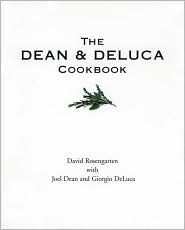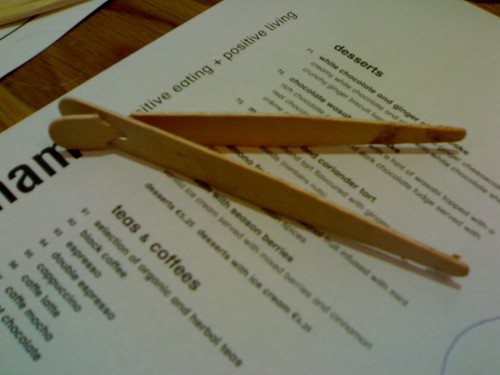A spartan post today.
A list rather than a bundle of paragraphs. But consider it research toward a series of future travels: here are some food festivals it would be fun to attend sometime soon. Who says we've utterly lost sight of regional cooking in the US?
NB: I'm striving to avoid reproducing a Food Network-style litany of endless BBQ contests, chili pageants, and fried chicken roundups; these are all, for the most part, harvest festivals of some sort or another. Some of them will have, I am sure, the inevitable bells and whistles. But in principle, here is a list of festivals organized in celebration of regionally grown foods:
1. The "Feast of the Ramson" ramp festival in Richwood, VA in late April/ early May. There are others, too, but this one seems like the king. Elkins, West Virginia also has one. Here's a master listing:
http://www.richwooders.com/ramp/ramps.htm And my, my, aren't those ramps delicious. I remember when the (now former) owner of Django in Philadelphia presented us with a raw-milk cheese and a bundle of fresh ramps. It warmed my heart.
2. The Morel Festival in Boyne City, Michigan around the same time (early May). See
http://www.morelfest.com/ There are also festivals in Muscoda, Wisconsin; Grafton, Illinois; Nashville, Indiana, and elsewhere. Not to mention on our very own street.
3. The Oregon Truffle festival in Eugene, OR in late January. See
http://www.oregontrufflefestival.com/ This one might be a stretch, in the sense of wish fulfillment. But who knows; maybe someone will figure out how to farm white truffles in the US.
4. The Vermont Maple festival, late April, in St. Albans, VT. See
http://www.vtmaplefestival.org/ There are others, too: in NY, PA, etc. The Pennsylvania Maple Festival just celebrated its 62nd year; it takes place over two weekends in late March in Meyersdale PA (near Maryland).
http://www.pamaplefestival.com/ I wish I'd known about this one-- it will be fun to attend this next year, and a good way to punctuate those bleak final days of March winter (or "mwinter," to coin a term).
5. The Maine Lobster Festival- -in its 61st year-- takes place at the end of July in Rockland, ME.
http://www.mainelobsterfestival.com/ I'll even bring my own butter.
6. Seattle Cheese Festival-- in mid-May, in downtown Seattle. What fun to taste artisanal cheeses on the west coast. There's also an artisanal cheese festival in Sonoma county, CA. A worthy road trip.
For something closer to home, there are numerous festivals in NY and PA, including one in late September in Long Valley, NJ. Will there be one in 2008?
http://www.valleyshepherd.com/cheese_Festival.htm It's a digression away from regionalism, but a national event in support of regional cheesemaking is the American Cheese Society's annual conference and competition. This year the 25th anniversary convention will be in Chicago in late July.
http://www.cheesesociety.org/7. The Bethlehem Shad Festival, early May in Bethlehem, PA.
http://mgfx.com/fishing/assocs/drsfa/shadfest.htm There are others on the Delaware and Hudson rivers, too. I'm still waiting for a well-prepared fresh shad roe.
8. The Gilroy Garlic Festival, in Gilroy, CA at the end of July.
http://www.gilroygarlicfestival.com/9. The Breaux Bridge Crawfish Festival, in Breaux Bridge LA in early May.
http://www.bbcrawfest.com/ There are also big festivals in Biloxi, Mississippi; Faunsdale, Alabama, etc. I would loooove to do this.
10. The Dungeness Crab Festival in Dungeness, WA in October.
http://www.crabfestival.org/ Of all the places to hold a Dungeness Crab Fesival. I mean, seriously.
11. Blue Crab Festival in May in Little River, SC:
http://www.bluecrabfestival.org/ Of course, simply heading down to Chesapeake City for a crab dinner is pretty danged fun as well. Here's our old favorite, incidentally:
http://www.woodyscrabhouse.com/12. There are a zillion Apple Festivals, but the National Apple Harvest Festival is in Arendtsville, PA (near Gettysburgh) in October:
http://www.appleharvest.com/13. The Wellfleet Oyster Festival, Mid-October on Cape Cod.
http://www.wellfleetoysterfest.org/ One of dozens of oyster festivals. But this is a nostalgic one, as I grew up spending summers there.
14. Laredo Jalapeño Festival, in Laredo, TX in February.
This might sound like it's getting close to Food Network material, but check out the food photographs on this web site:
http://www.dallasfood.org/modules.php?name=News&file=article&sid=2515. The Washington, LA Catfish Festival. Takes place in mid-March
http://townofwashingtonla.org/ -- another fun category are the gulf region Mullet festivals, which tend to take place in October. cf, for instance, the Boggy Bayou Mullet Festival in Nicetown, Florida.
http://www.cityofniceville.org/mullet.html16. The World Grits Festival in St. George, SC in mid-April:
http://www.worldgritsfestival.com/17. OK, here's something gleaned from the internet: the Annual Poke Salat Festival in Arab, Arkansas, in early May. What is Poke Salat? It's mountain-talk for the salad made from boiled pokeweed leaves (Phytolacca americana), which you've no doubt seen by roadsides and ditches. The weed is poisonous, incidentally.
http://www.pokesalatfestival.com/pokeweed.html18. There are dandelion festivals in Dover, OH; Borculo MI; and Vineland, NJ, among other places. I think this would be utterly delicious. Fortunately we've started to see more dandelion greens at grocery stores, among the ranks of turnip, mustard, and collard greens.
19. The Prestwood County Buckwheat Festival in Kingwood, WV, in late September
http://www.prestoncounty.com/pcbf.htm Regional? Sounds like it, at least.
20. The Alabama Butterbean Festival, in Pinson, Alabama. This takes place at the end of August. No doubt a fine time to walk around in the Alabama sunshine.
http://www.butterbeanfestival.com/21. The Irmo Okra Strut Festival, in late September in Irmo, South Carolina.
http://www.irmookrastrut.com/22. The Circleville Pumpkin Show in Circleville, OH in mid-October. Among many, many harvest festivals, this seems to be a big one. And since Ohio begins with the letter "O"-- at once a circle and the general contour of a pumpkin-- Circleville seems like an appropriate setting for the event.
http://www.pumpkinshow.com/23. The Nantucket Cranberry Harvest Festival, on Nantucket Island in October. There may be a lot of bogs around the Northern US, but how lovely to visit Nantucket in the Fall...
24. The Copper River Wild Salmon Festival, held in July in Cordova, Alaska. This is a major event, and worth every ounce of effort to attend, I am sure.
http://www.copperriverwild.org/25. The Fiddlehead Festival in Randolph, VT in early May. Which reminds me that I haven't seen any fiddleheads for sale this season. I hope I haven't missed them!
http://www.fiddleheadfestival.com/This is, of course, just a partial and preliminary list-- I've left out the innumerable strawberry, peach, blueberry, melon, tomato, and raspberry harvest festivals, as well as the countless wine events and grape stompings. A good source for such events is available at
http://www.foodreference.com/html/upcomingfoodevents.html It also has listings of local food celebrations based on cooking and cuisine, as well: "Taste of Cape Cod," "Taste of Fresno," and so forth.
None of this is especially new: there's a whole micro-tourism industry dedicated to these events, as a way at once to raise capital in small rural towns, as well as to stave off the disappearance of regional cooking. Cooking styles and traditions are one thing, but I'll continue to think about locally-specific (or reasonably locally-specific) foods themselves. Beach plums. Chokecherry. Geoduck. Rocky Mountain Oysters (for this, go to
http://www.testyfesty.com/).
Incidentally, we'll be heading to the Rocky Mountains this summer. I see a few such "oysters" in my future...
 Two of my favorite cookbooks-- from which most of "my own" recipes have been adapted— are based on stores that sell (or used to sell) prepared foods in New York City. The Silver Palate spearheaded a cooking renaissance of sorts in the US; Dean and DeLuca continues to stock the name-brand fancy foods of the world.
Two of my favorite cookbooks-- from which most of "my own" recipes have been adapted— are based on stores that sell (or used to sell) prepared foods in New York City. The Silver Palate spearheaded a cooking renaissance of sorts in the US; Dean and DeLuca continues to stock the name-brand fancy foods of the world.




